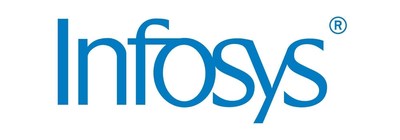
Launched as an homage to the Moniac (Monetary National Income Analogue Computer), the new simulator offers a hands-on approach to teaching the flow of money and macroeconomic principles. Originally built by New Zealand economist Bill Phillips in the late 1940s, the Moniac was a hydraulic-based computer that demonstrated the relationship between various sectors of an economy. Phillips’ model, using water to simulate money, visually illustrated economic dynamics such as inflation, investment, consumption, and taxation. The FT Money Machine is a modern digital reincarnation of this idea, updated to serve today’s education needs in a digitally driven world.
Leveraging the capabilities of Apple Vision Pro, the FT Money Machine creates an extended reality (XR) environment, allowing users to explore and interact with economic concepts in a way that traditional models cannot. The immersive experience offers users the ability to manipulate different economic variables and observe the real-time effects on a virtual economy. This transformative approach to education has been heralded as a major advancement in how complex financial systems are taught, particularly in classrooms and corporate training environments.
The initiative is expected to enhance economics education by offering a more intuitive way to understand the flow of capital in an economy. This digital transformation, driven by Infosys’ expertise in AI and technology, allows educators and learners alike to engage with economic models more effectively. With Apple Vision Pro’s spatial computing capabilities, the simulation breaks the constraints of two-dimensional learning, providing a three-dimensional understanding of money flow, supply and demand, and other macroeconomic indicators.
While the Moniac relied on water-filled pipes and tanks to visualize the movement of money through an economy, the FT Money Machine uses advanced XR technology to simulate the same flow digitally. Participants can adjust variables such as government spending, interest rates, or tax policies to see how different decisions impact inflation, GDP growth, and other key economic metrics. This interactive setup helps demystify complex economic theories by offering a tangible, real-time visualization of these principles in action.
Infosys’ role in the creation of the FT Money Machine is central, with the company bringing its technological prowess to bear on the project. Known for its expertise in cloud computing, artificial intelligence, and XR, Infosys has been at the forefront of educational technology innovations. This collaboration with *The Financial Times* represents another milestone in its broader mission to blend technology with education, creating tools that are both cutting-edge and accessible to a global audience.
The Apple Vision Pro headset, which serves as the hardware backbone for the FT Money Machine, adds a level of immersion and realism that had previously been unattainable in educational simulations. Apple’s device, with its high-resolution display and ability to track head and hand movements, ensures that users are not merely passive observers but active participants in the simulation. This interactive nature of the FT Money Machine is what sets it apart from traditional teaching tools. Users can move through the virtual space, adjusting different components of the economy and seeing the immediate impact of their decisions.
Furthermore, the collaboration between Infosys and *The Financial Times* underscores the growing trend of partnerships between technology companies and media organizations. *The Financial Times*, one of the world’s most respected financial newspapers, has long been a trusted source of information on global economic trends. Its decision to co-develop the FT Money Machine reflects its commitment to staying ahead in a rapidly digitizing world. With readers increasingly expecting dynamic and engaging content, this partnership signals a broader shift towards blending news, education, and interactive technologies.
This joint effort has also been praised for its potential to democratize access to economic education. Traditional models for learning about the economy, particularly those based on complex formulas and theories, can be difficult for many to grasp. The FT Money Machine, however, offers a more intuitive and engaging way to learn these concepts, which is expected to be especially appealing to younger audiences and those with little formal economics training.
Educational institutions, both secondary and tertiary, are expected to benefit from this innovation. By providing students with the ability to engage with economic concepts through a fully immersive platform, educators can enhance traditional methods of teaching, offering students a more hands-on experience. This tool could also become a valuable asset for corporate training programs, particularly in sectors such as finance, business, and economics.
While the FT Money Machine’s primary focus is education, its implications go beyond the classroom. Corporate leaders and policymakers can also leverage the simulator to model economic scenarios, testing the potential impact of various policies or market conditions before making real-world decisions. By offering a controlled, virtual environment where economic theories can be tested, the FT Money Machine may serve as a powerful tool in both academic and professional settings.
